Fingerprinting 490 Final
1/68
There's no tags or description
Looks like no tags are added yet.
Name | Mastery | Learn | Test | Matching | Spaced |
|---|
No study sessions yet.
69 Terms
Ancient use of Fingerprints
Babylon (2000 B.C.)• Archaeologists have discovered evidence showing fingerprints were used on clay tablets• Prints were considered a unique signature or mark
China (221 B.C.)• In ancient China, fingerprints were also used as a form of identification on legald ocuments• It was a common practice to"sign" documents using the fingers or palm.
FIngerprinting in 1902
United States first using fingerprints as a means of ID
Fingerprinting in 1915
International association for identification was founded
William Herschel
Used thumbprints on documents to identify workers in India
Fingerprints are unique
Henry Faulds
claimed that fingerprints did not change over time and that they could be classified for identification
Sir Francis Galton
Coined eugneics, discovered loops, arches, whorls
Juan Vuccitch
Fingerprinting methodology called dactyloscopy
Sir Edward Henry
brought Bertillion system to Bengal, assigned numerical values to fingers
Henry DeForest
First systematic use of fingerprinting in the US 1902, established practice of fingerprinting on civil service applications in NY
Bertillion
System of ID by measuring body parts
Will West Case
A case in which two inmates so closely resembled each other in physical characteristics that the traditional Bertillon method of identification was discredited.
Volar skin
contains friction ridge detail, textured surface on hands and feet
friction ridge detail
Developed in-utero•
During 8th-10th week of gestation• Fully developed at 6 months• Persistent throughout one's lifetime•
Barring permanent scarring• Decomposition after death
Will lean in same direction pressure is applied
Permanent and unique
Harold Cummins
found that the location and growth of the volar pad affected the friction ridge development and pattern configuration
high volar pad
High-centered pads are believed to form whorl-type patterns
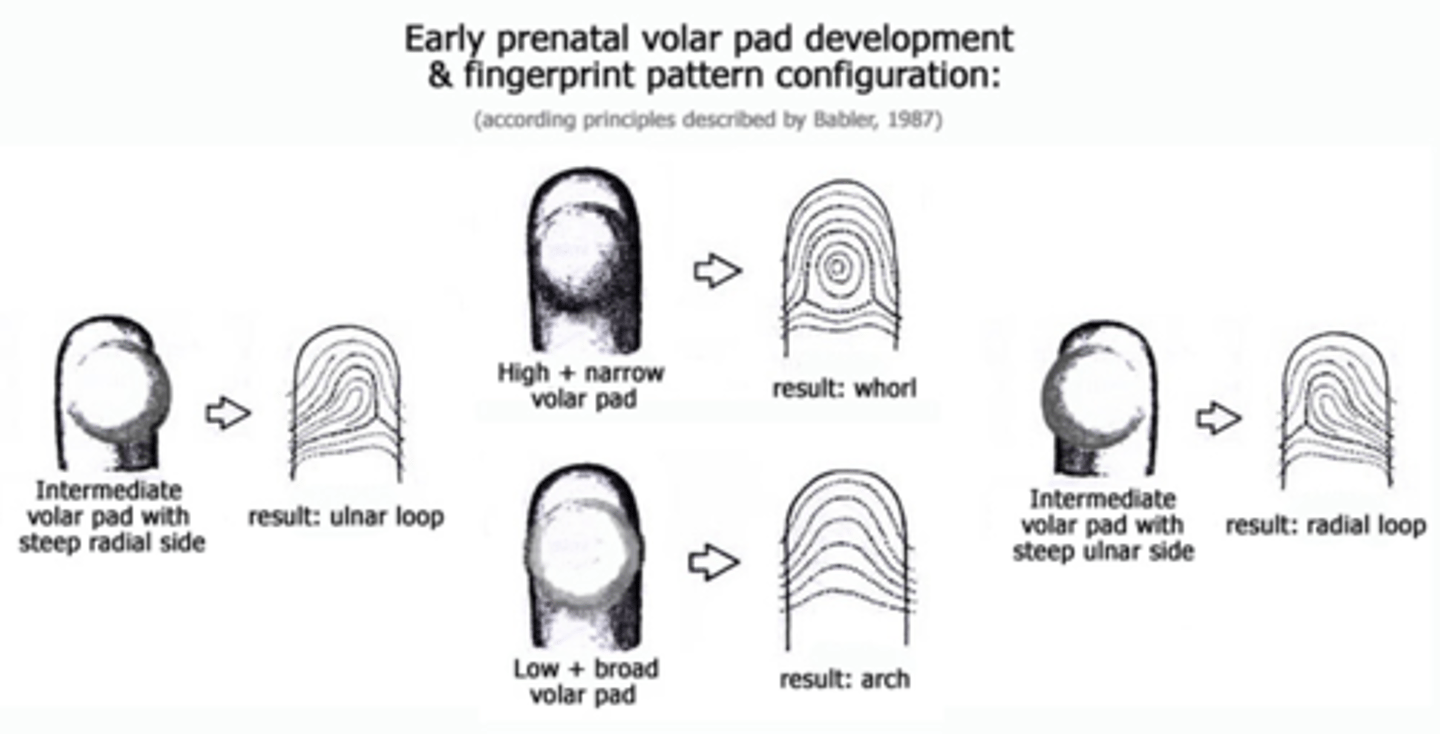
intermediate volar pads
Intermediate pads with a trend are believed to form loop-type patterns.
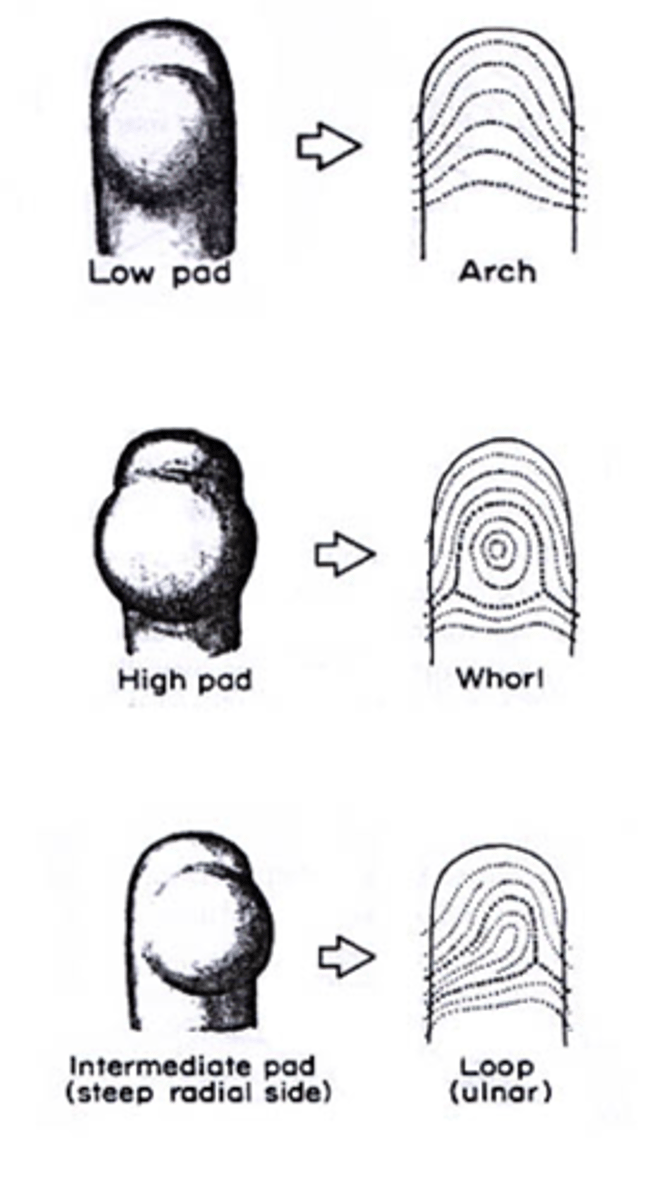
low volar pads
• Low volar pads tend to form arch or low count loop patterns and can be the result of a disturbance during fetal formation.
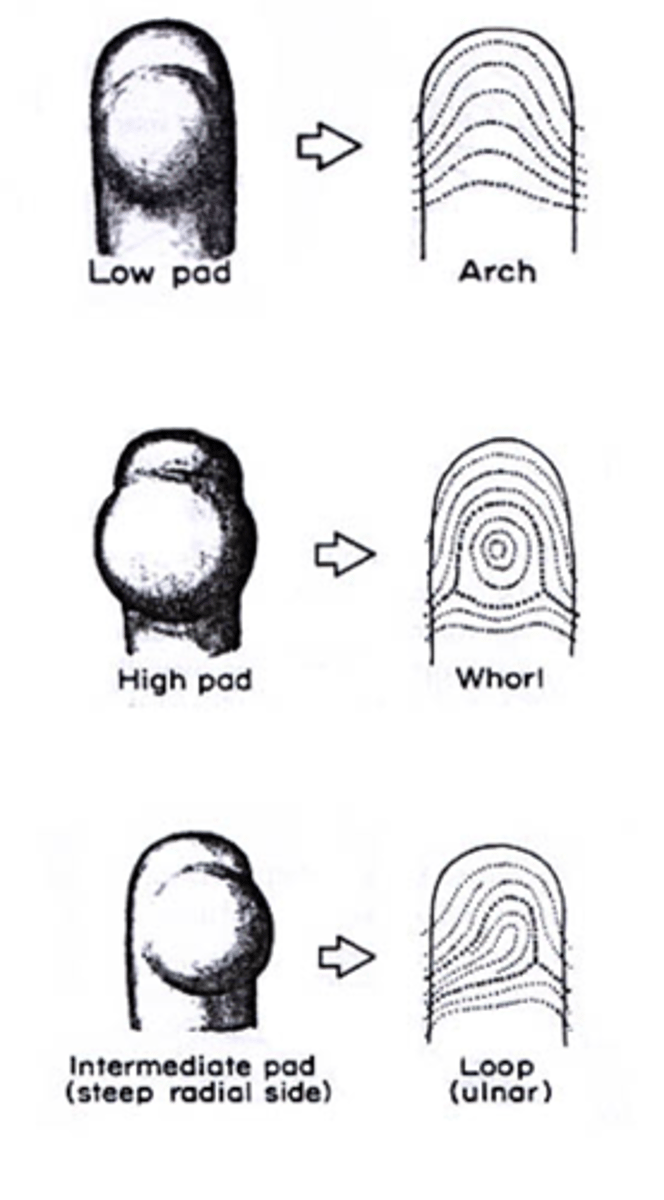
Hand is divided into twelve regions
-5 digits
-4 interdigital areas
-Thenar side(T)
-Hypothenarside(H)
-Central Area(C)
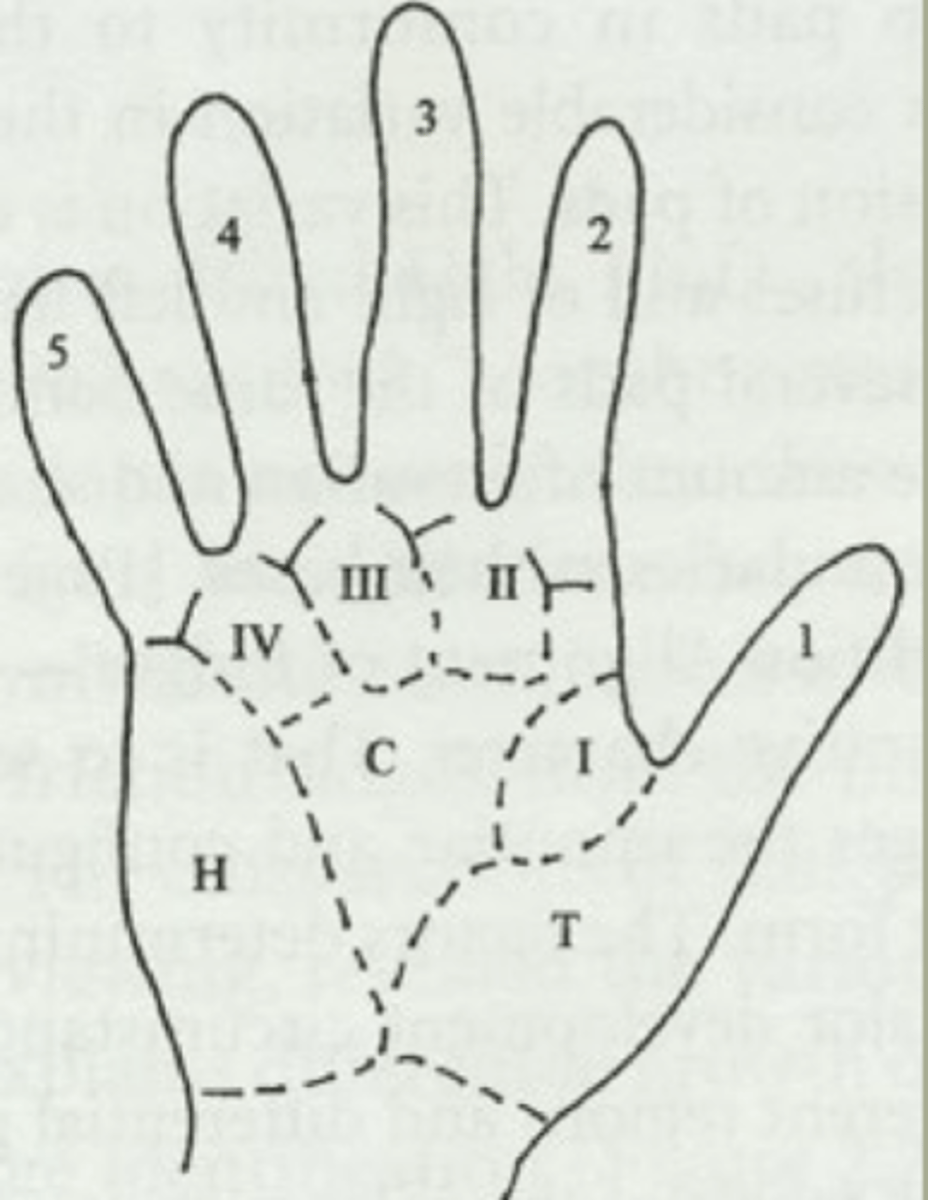
primary ridges
Ridge formations found directly under surface friction ridges• Mirror the surface ridge and contain pore structures
Epidermis
Outer layer of the skin• Made up of several layers of skin cells
Generating layer: deepest layer of cells in epidermis next to dermis called basal layer
basal layer
template of fingerprint
Dermis
Inner layer of the friction skin• Loose connective tissue composed of fibrous proteins.• Vascular with numerous blood vessels, lymphatics,various glands and tactile nerves
"true skin"
injury/disease that penetrates the skin to the dermal layer can damage and may leave scar (damages generative layer)
latent print
also known as crime scene prints. These are hidden fingerprints often found at the scene of a crime and need to be developed so they are visible
98-99% moisture
patent print
a visible print. The friction ridge detail is visible due to some type of transfer medium such as blood, ink, or paint
plastic print
also referred to as impressed prints. Friction ridge detail is idented into soft pliable such as wax, wet paint, butter, or gum. These types of prints are three-dimensional
known prints
also referred to as exemplar prints. These are intentional prints collected from aperson typically using ink, black fingerprint powder, or livescan.
10 print card
critical areas of a fingerprint
delta, core
delta
point on a ridge at or nearest to the point of divergence (tri-radius)
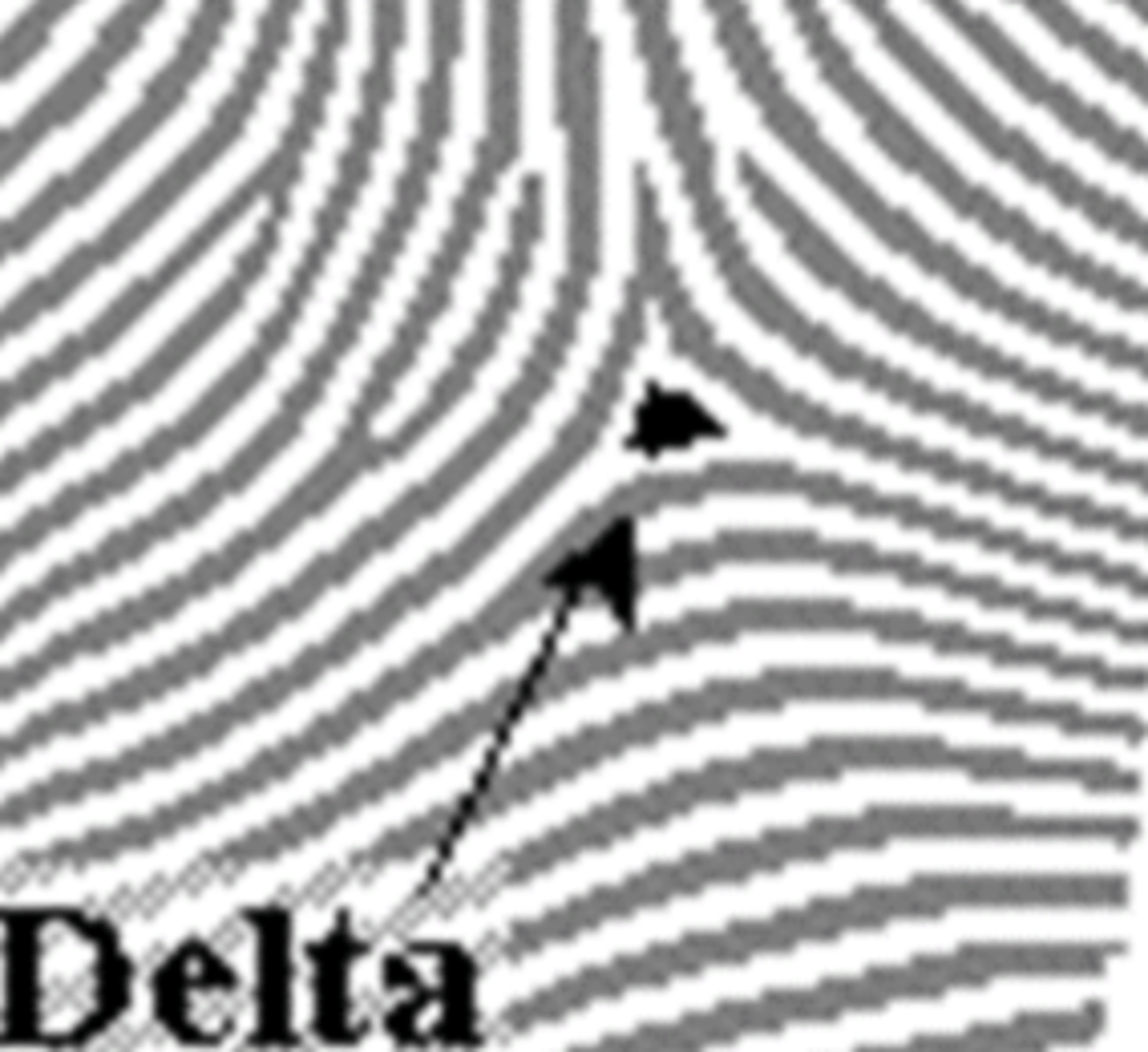
core
approximate center of a fingerprint pattern
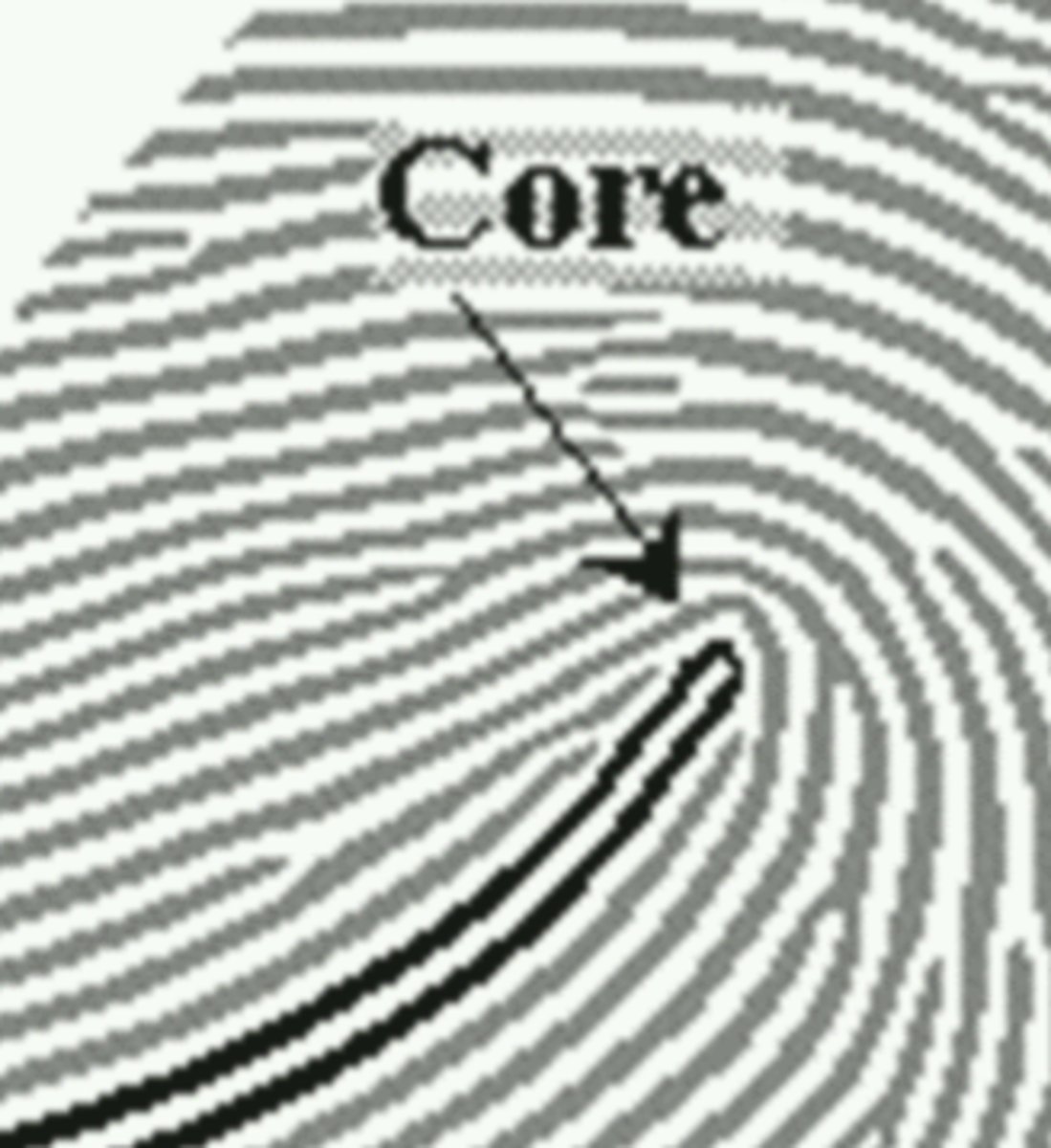
arch
plain, tented arches. 5% of people have
No deltas or cores
The ridges enter from one side of the finger, rise in the center, and exit out the other side of the finger
tented arch
The rise in the center is more pronounced and has a "tent-like" peak
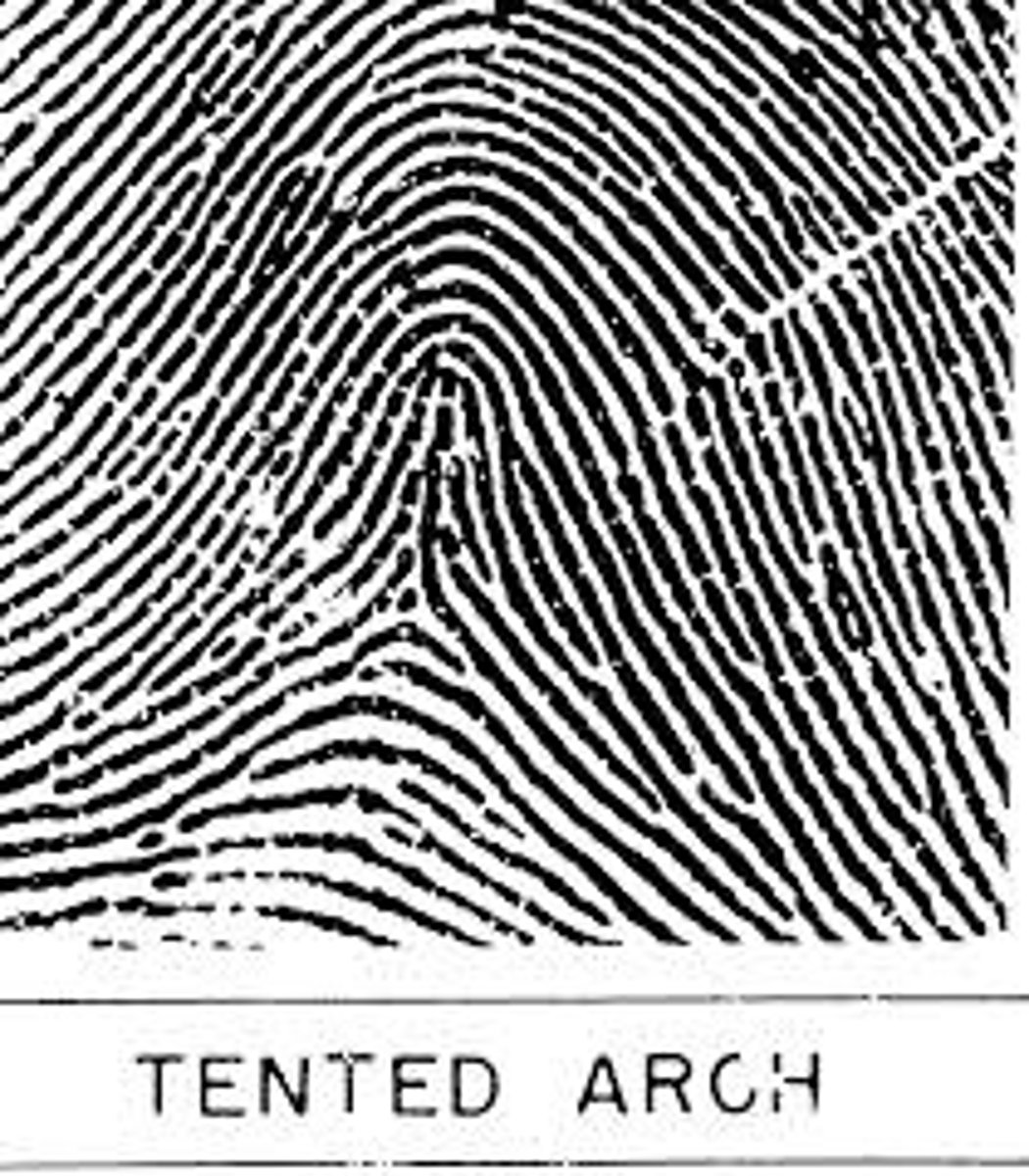
plain arch
Ridges flow smoothly with a gentle rise in the center
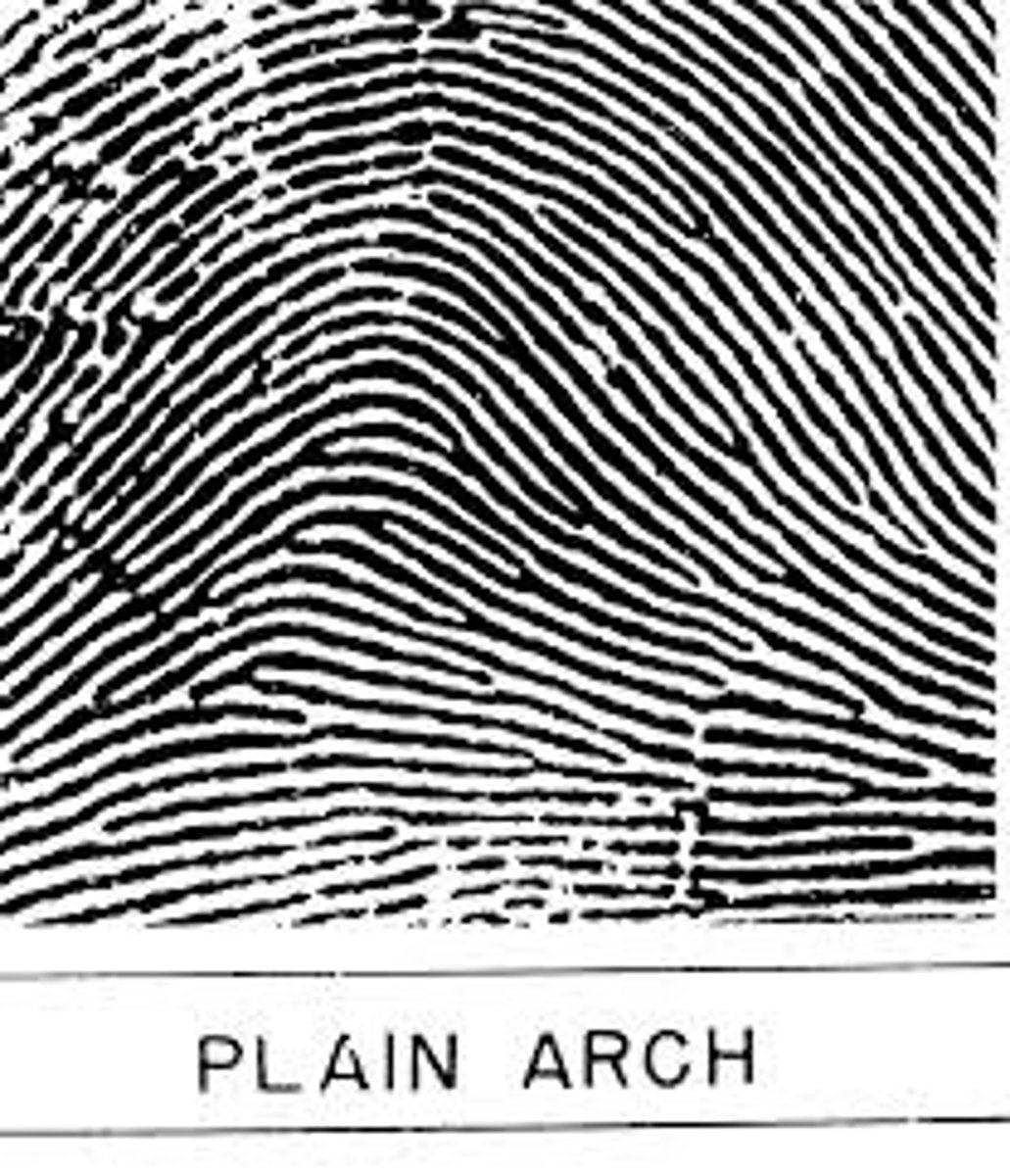
whorl
plain, double loop, central pocket, accidental. 30% of people have
Whorls have at least two deltas
Each delta will have a recurve in front of it
plain whorl
One or more ridge that make a complete circle or circuit
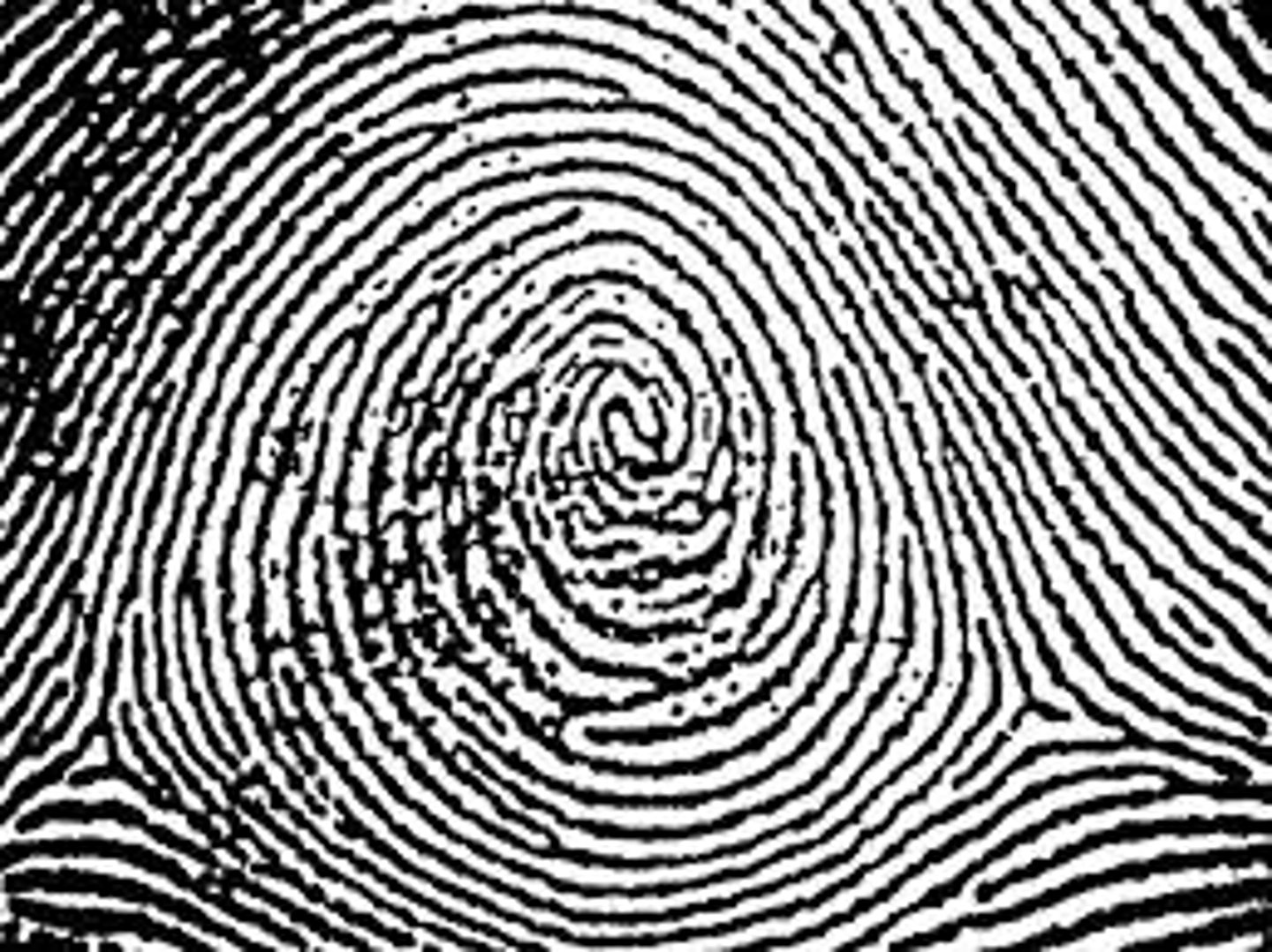
double loop whorl
Two separate loop formations that intertwine
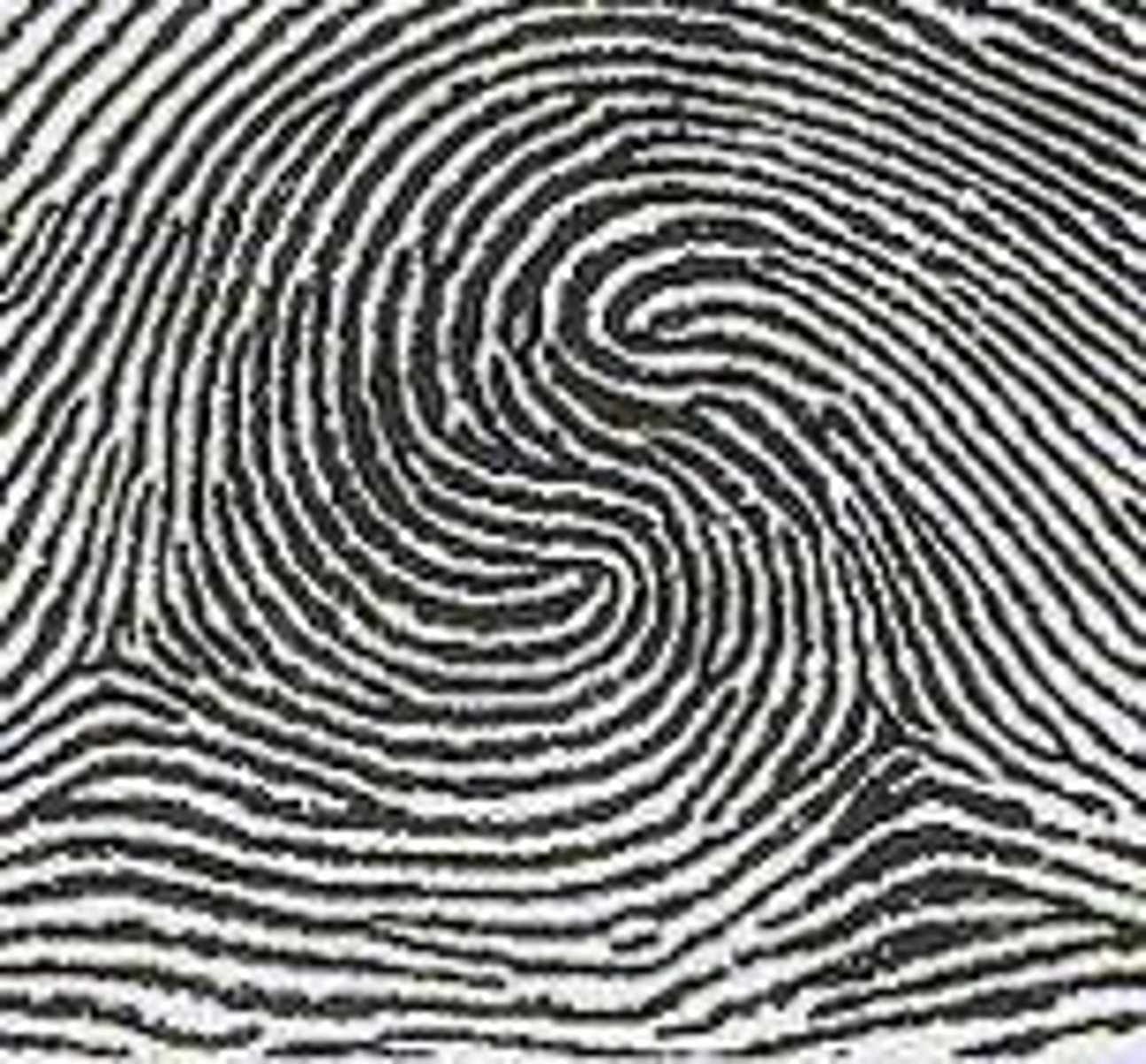
central pocket loop whorl
One or more ridges that make a complete circuit, but it includes a loop in the enclosed area
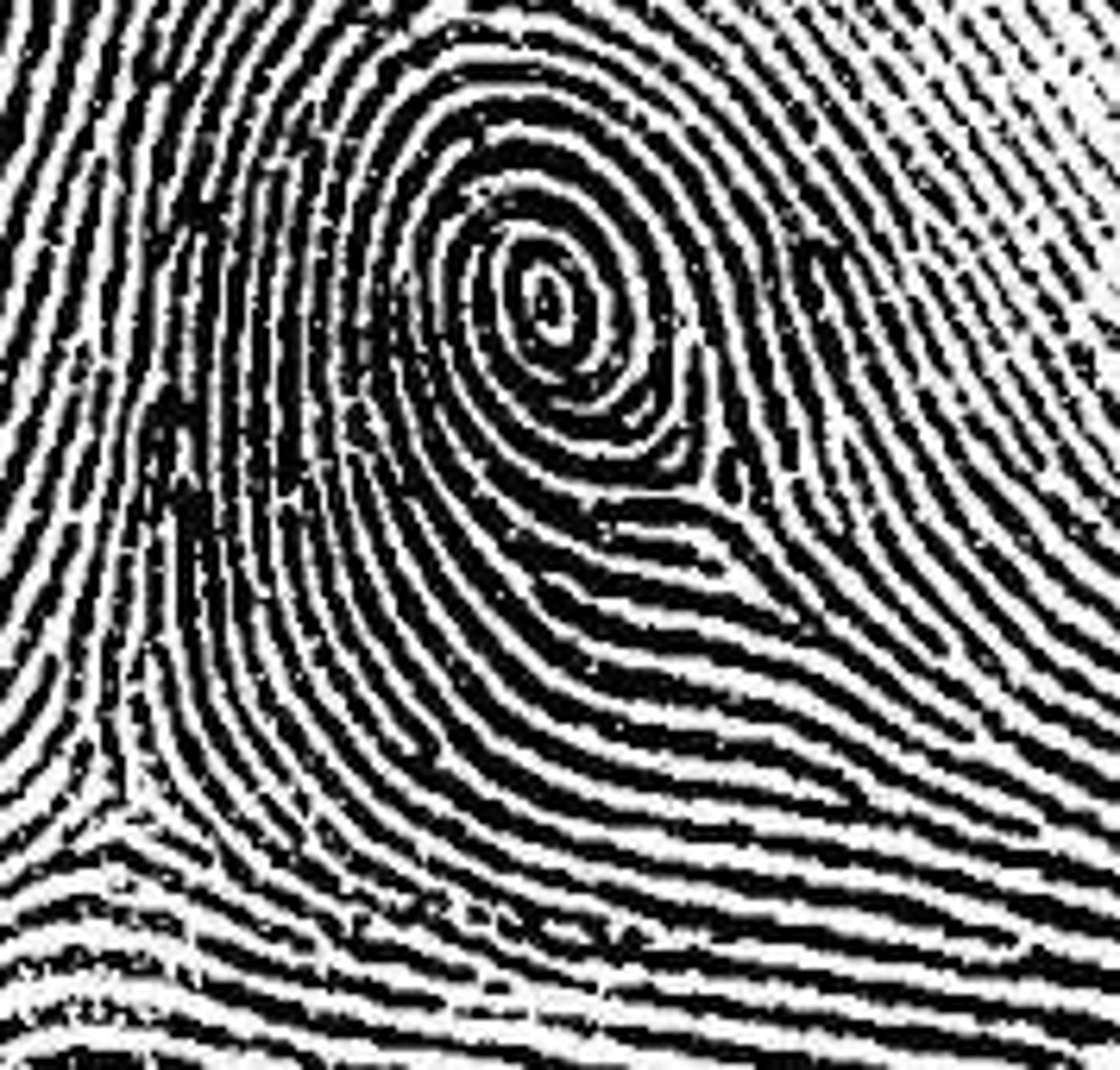
accidental whorl
Multiple whorl types within one pattern that does not fit into one of the sub-pattern types above
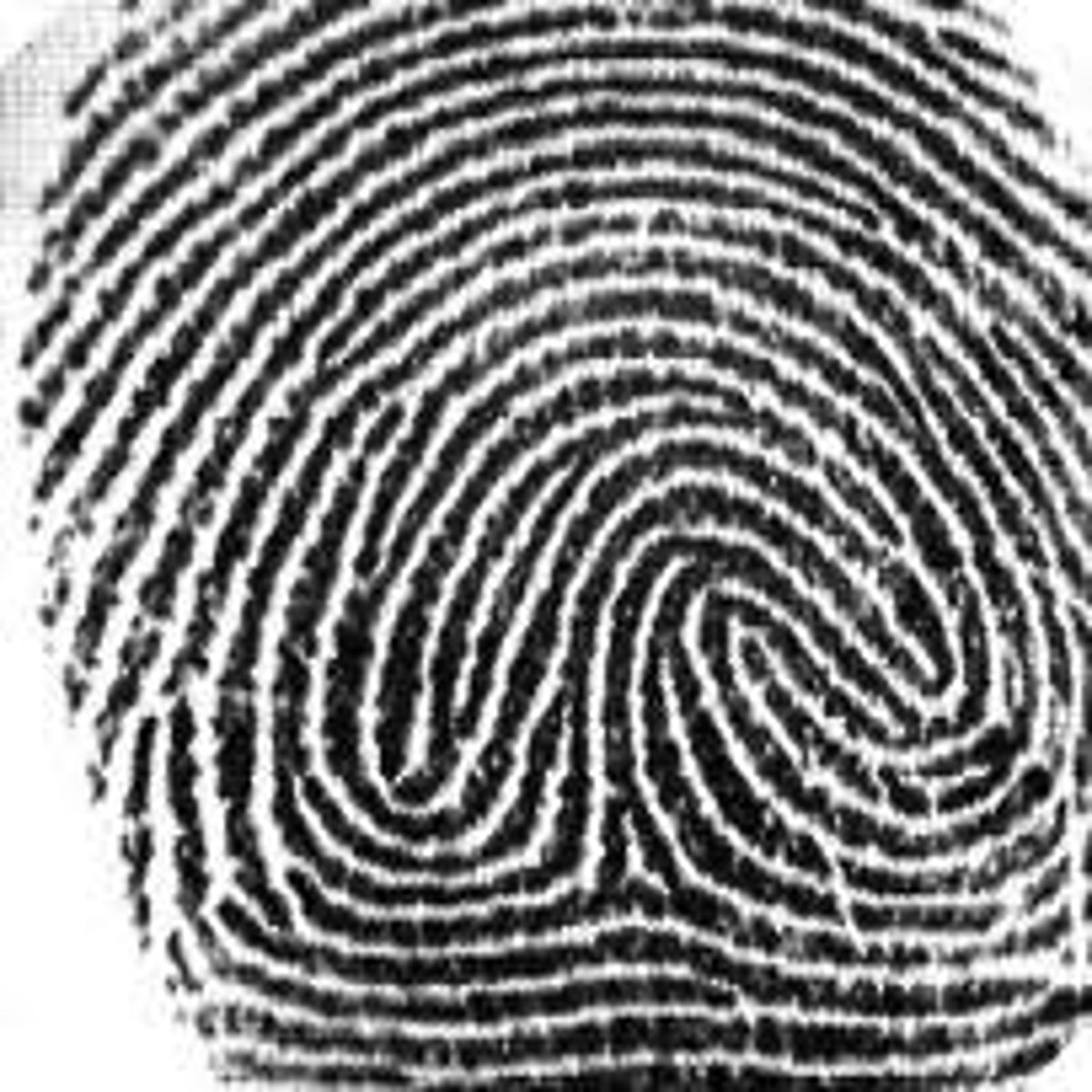
loop
65% of people have,
Only one delta
A ridge that goes out or tends to go out the same side fromwhich it entered
At least one ridge that crosses a line drawn between thecore and the delta
left slant loop
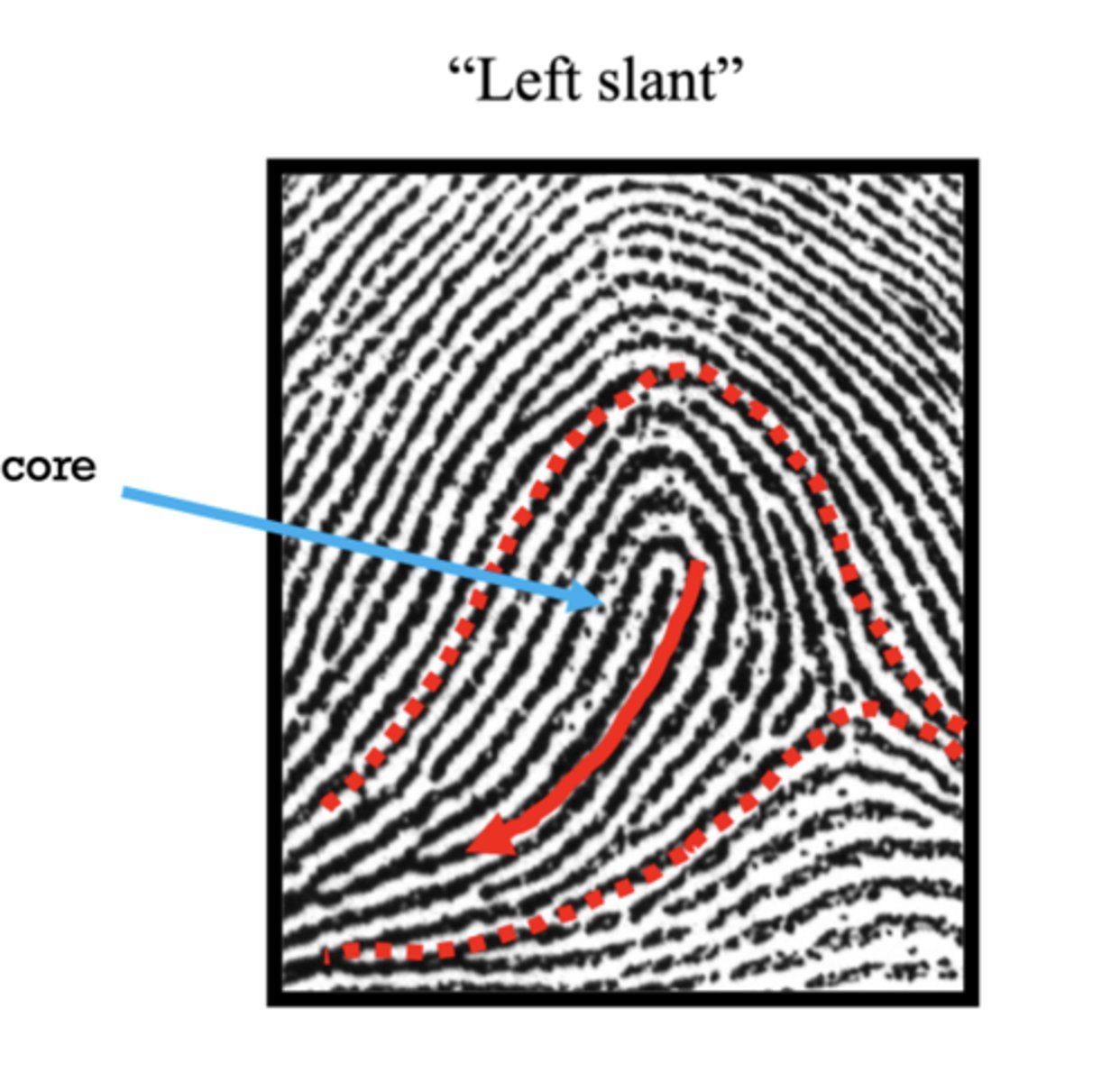
right slant loop
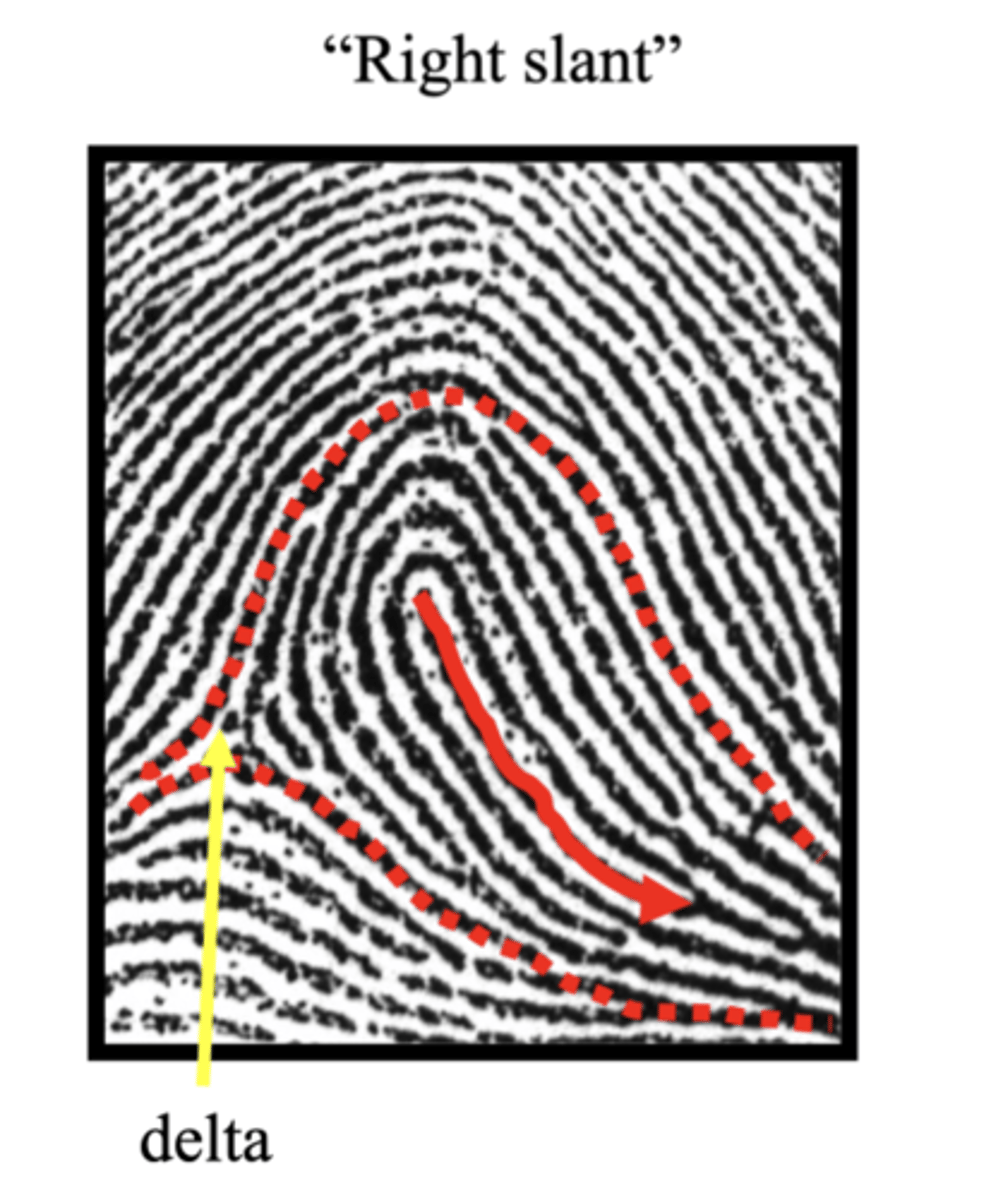
radial loop
ridges come from the thumb side (radial bone) recurve and go out same side
Loop opens towards the thumb side of the hand
ulnar loop
ridges flow towards the little finger or "ulnar side" of the hand Ulnar loops are more common than radial loops
ridge characteristics (minutiae)
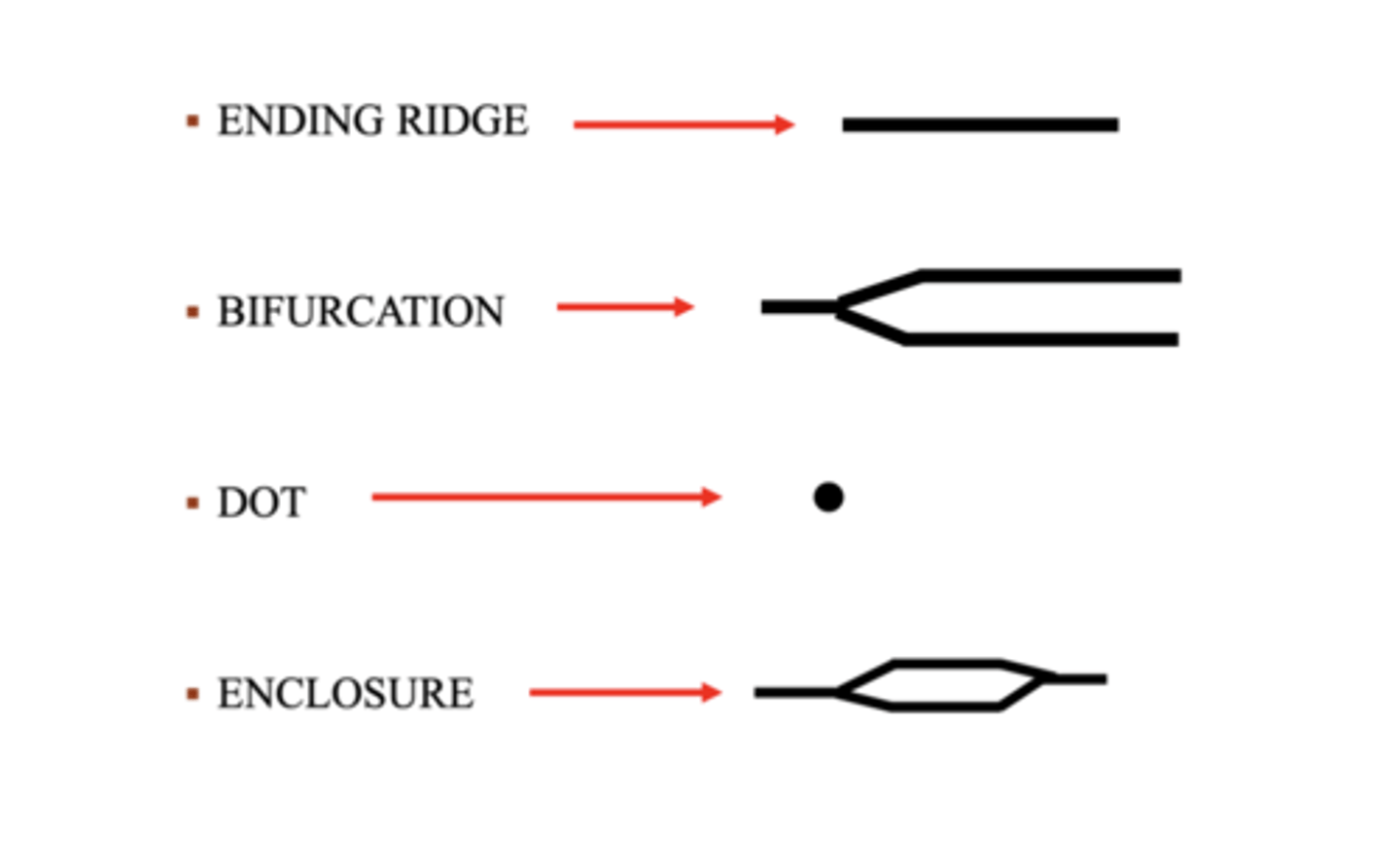
ridge flow
1st level of detail: Overall ridge flow General morphology Pattern interpretation Determine anatomical source and orientation Not used to individualize
ridge path
2nd level of detail: Ridge path deviation Absence of ridge path deviation (continuous ridge) - minutiae
ridge shapes
Occasional" Features Ridge shape Creases Pore location Temporary injuries Permanent scars
Factors that affect how prints are deposited
Amount of contact/time Condition of the surface or object Textured Smooth Clean Dirty Environment Windy Hot Wet
Black, bi-chromatic, gray, white, or silver powder
Used on the majority of surfaces Color of powder used depends on the color of the surface (contrast)
Black, bi-chromatic, or silver magnetic powder
Used on glossy surfaces; glass, tile, and plastics Used on waxy surfaces; drink cups, magazine covers, and some typesof fruit Can be used to expose "indented writing"
Deposition factors (prints)
Sufficient residue (matrix)•
Suitable surface•
Manner of contact/touch
•Environmental condition
non-porous surfaces sequential processing
glass, aluminum cans,plastics, metals, high-gloss or wax-coated paper orcups, varnished wood, firearms, and cartridges
1. CAE (superglue fuming)
2. Powder
3. Solution Stain (Rhodamine 6G and/or RAM)
porous surfaces sequential processing
Currency
1. DFO
2. Physical developer (PD)
3. Ninhydrin can be used on "newer" currency after DFObut before PD.
Cardboard, paper items, and wallboard
1. DFO
2. Ninhydrin
3. DFO - If the ninhydrin prints are faint, then DFO canbe used to possibly enhance the print detail.
4. Physical developer
Eosin Y
Eosin Y is a dye solution which binds to the protein molecules in blood to yield a colored complex.
CYANOACRYLATE FUMING
Vapors containing cyanoacrylate ester react with the moisture andoils present in latent prints to form a white, relatively stable polymer
Dye stains
Used post superglue fuming
Apply RAM solution with a wash bottle for "squirt"application, or in a glass dish for "dip" application. Air Dry
Rho-6
Lumicyano
removes the post-processing stage of dyeing or dustingwith powder After the fumigation cycle, the latent marks willfluorescent under forensic lightning.
Ninhydrin
reacts with amino acids, the building blocks of proteins, to forma reddish-purple compound. Proteins and amino acids are secreted by thepores found in friction ridge skin.
DIAZAFLUOREN-9-ONE (DFO)
DFO causes amino acids present in latent residue tofluoresce when illuminated with LASER/ALS
Wet wop
Wetwop is a pre-mixed powder suspension solution used forrecovering fingerprints on adhesive surfaces. Wetwop adheres to thefingerprint residue without adhering to or painting the background.
Sticky side powder
It is applied to the adhesive side of tapewith a camelhair brush and allowed to setfor 10-15 seconds. It may be left on longeror rinsed off sooner. It may be reapplied, ifdesired.
Physical Developer
PD reacts with components of sweat (sebaceous secretions) toform a gray/silver deposit.
The process is normally used on paper but can also be appliedto other porous materials
Sudan blackdye stain.
dye stain. It will adhere to ridgedetail contaminated with greasy or sticky substances. It can be used to enhance superglue-developed evidence prints. The stained print willbe a blue-black color.
non-porous surfaces
Small particle reagent
detect latent prints on wet or sticky non-porous surfaces
adheres to the fats present inthe latent print residue.
Leucocrystal violet (LCV)
When LCVand hydrogen peroxide come into contact with hemoglobin or its derivatives, a violet-colored dye (crystal violet) is formed.
Amido black
general protein stain. Amido black solution is used tocreate contrast with the background by staining the proteins present inbloody evidence prints (fingerprints / shoeprints / tire tracks)
Acid yellow
detect latent prints made with blood-contaminated fingers/palms on dark-colored, non- porous and semi-porous surfaces by ALS examination
ACE-V
Analysis: Information gathering, Suitability for comparison, Orientation
Comparison: side by side, use reference points/ target group
Evaluation: identification, exclusion, inconclusive
Verification: Second examiner to confirm
International Association for Identification Standards
Perform duties with honesty and impartiality.
Avoid overstating or understating findings
Maintain professional competence
Work within the limits of their expertise.
Clearly communicate findings
Acknowledge limitations
Avoid conflicts of interest.
Resist pressure to conform
Avoid misrepresentation
Be prepared for cross-examination.
Report unethical behavior.
Take responsibility for mistakes
Follow validated procedures
People v Crispi
Court allowed the fingerprint evidence which made this a pivotal decision as this demonstrated acceptance of the scientific method
Defendant was convicted on the latent print evidence
This case set precedence for the admissibility of fingerprint evidence into court